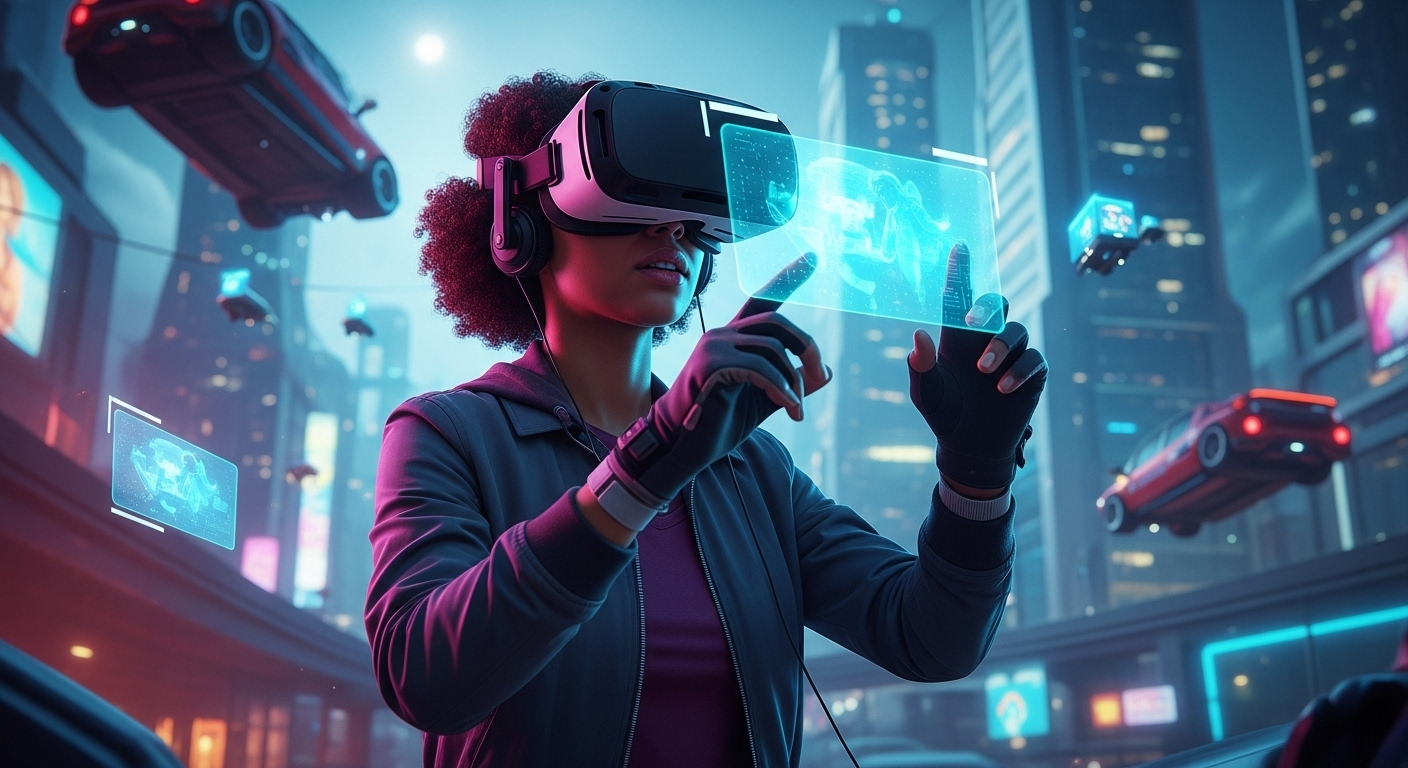Neon Noir: The Resurgence of Cyberpunk Aesthetics
In the pulsating heart of contemporary visual culture, a neon-drenched renaissance is underway. Cyberpunk aesthetics, once relegated to the fringes of science fiction, have surged into mainstream consciousness, captivating audiences across various mediums. This resurgence of neon-soaked cityscapes, augmented realities, and dystopian narratives is not merely a nostalgic nod to the past but a reflection of our increasingly digitized present and uncertain future.

The Digital Age Revival
As our world becomes increasingly intertwined with technology, cyberpunk’s themes of digital immersion and corporate dominance resonate more than ever. The genre’s aesthetic has found new life in contemporary media, from blockbuster films to indie video games. This revival is not just about visual style; it’s a reflection of our collective anxieties and fascinations with the digital age.
Neon Noir in Cinema
Recent years have seen a surge of films embracing cyberpunk aesthetics. From the neon-drenched streets of Blade Runner 2049 to the virtual realms of Ready Player One, these movies have brought the genre’s visual language to a new generation. Directors are using advanced CGI and practical effects to create immersive, hyper-realistic cyberpunk worlds that blur the line between the physical and digital.
Fashion’s Cyber Revolution
The influence of cyberpunk has extended beyond the screen and into the fashion world. Designers are incorporating futuristic elements like LED-embedded clothing, holographic fabrics, and augmented reality accessories into their collections. This tech-meets-punk aesthetic has been embraced by both high-end fashion houses and street style enthusiasts, creating a new wave of cyber-inspired fashion.
Music and the Synthwave Phenomenon
Accompanying the visual resurgence of cyberpunk is a musical movement known as synthwave. This genre, characterized by its retro-futuristic sound and heavy use of synthesizers, harkens back to the electronic music of the 1980s while incorporating modern production techniques. Artists like Kavinsky and The Midnight have gained significant followings, their music serving as the perfect soundtrack to the neon-lit cyberpunk revival.
The Impact on Visual Arts
Digital artists and illustrators have embraced cyberpunk aesthetics with open arms. Social media platforms are awash with artwork depicting futuristic cityscapes, cyborg characters, and dystopian scenarios. This digital art movement has not only revitalized the genre but also pushed its boundaries, incorporating elements of vaporwave, glitch art, and other contemporary digital aesthetics.
Virtual Reality and the Metaverse
As virtual reality technology advances, the line between cyberpunk fiction and reality continues to blur. The concept of the metaverse, a collective virtual shared space, is no longer confined to science fiction. Tech giants are investing heavily in creating immersive digital worlds, bringing us closer to the reality envisioned by cyberpunk pioneers decades ago.
Cyberpunk in Gaming
Video games have long been at the forefront of cyberpunk media, and recent titles have taken the genre to new heights. Games like Cyberpunk 2077, despite its controversial launch, have set new standards for immersive, open-world cyberpunk experiences. These games allow players to not just observe but actively participate in intricately designed futuristic worlds.
The Cultural Commentary
The resurgence of cyberpunk aesthetics is more than just a visual trend; it’s a form of cultural commentary. In an era of increasing digital surveillance, corporate power, and technological dependence, cyberpunk serves as both a warning and a mirror to our society. It allows artists and audiences to explore complex themes of identity, autonomy, and humanity in an increasingly digital world.
Looking to the Future
As technology continues to advance at a rapid pace, the relevance of cyberpunk aesthetics shows no signs of waning. From augmented reality overlays in urban environments to the development of human-machine interfaces, many of the genre’s once-fantastical concepts are becoming reality. This convergence of fiction and fact ensures that cyberpunk will remain a vital lens through which we view our evolving relationship with technology.
In conclusion, the resurgence of cyberpunk aesthetics represents more than just a nostalgic trend. It’s a dynamic, evolving artistic movement that reflects our society’s deepest hopes and fears about the future. As we stand on the brink of technological breakthroughs that were once the stuff of science fiction, the neon-lit worlds of cyberpunk continue to captivate, inspire, and warn us. In the glow of this neon noir renaissance, we find not just entertainment, but a powerful tool for understanding and questioning our rapidly changing world.





